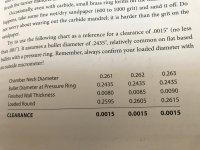herbeapuce
New member
Hi.
OK so tonight I neck turned my first 2 brass ever.....
using the PMA expander and PMA model B 30 degres for my 6mm PPC
Before I do them all, Please can you comment my work ?
first, did I go far enough into the shoulder ? or too much maybe ?
Also right now where is a burr I can feel where the turner stopped on the shoulder.... What to do for this? Should I spin the shoulder on a fine steel wool or a green Scotch-Brite pad? Or I went too deep into the shoulder ?
What else should I do , or know....
Please you are all very welcome to comment...
thank you
stef

OK so tonight I neck turned my first 2 brass ever.....
using the PMA expander and PMA model B 30 degres for my 6mm PPC
Before I do them all, Please can you comment my work ?
first, did I go far enough into the shoulder ? or too much maybe ?
Also right now where is a burr I can feel where the turner stopped on the shoulder.... What to do for this? Should I spin the shoulder on a fine steel wool or a green Scotch-Brite pad? Or I went too deep into the shoulder ?
What else should I do , or know....
Please you are all very welcome to comment...
thank you
stef




